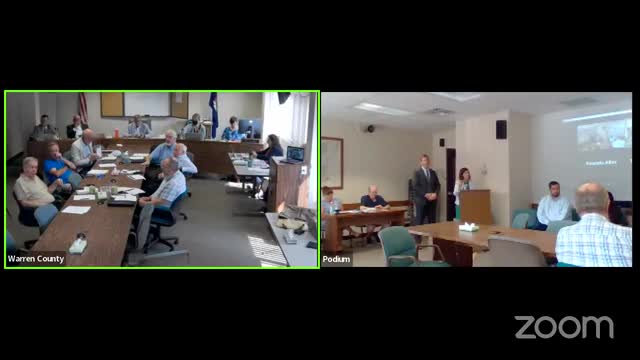Energy costs surge as demand outpaces supply
August 01, 2024 | Warren County, New York

This article was created by AI summarizing key points discussed. AI makes mistakes, so for full details and context, please refer to the video of the full meeting. Please report any errors so we can fix them. Report an error »

In a recent government meeting, officials discussed significant increases in energy costs, attributing much of the rise to external factors such as supply and demand dynamics and the lingering effects of the COVID-19 pandemic. The conversation highlighted a jump in electricity rates from over 5 cents to more than 8 cents per kilowatt, raising concerns about the financial impact on consumers, particularly during the hot summer months when air conditioning usage spikes.
One official noted that the current energy pricing structure is complex, with the most expensive generating units often setting the market price. This situation has led to fears that residents will face dual financial pressures from both rising energy rates and increased demand for electricity.
The discussion also touched on the potential long-term implications of deferred investments in energy infrastructure, suggesting that the dramatic rate increases might have been less severe had the pandemic not disrupted previous growth in energy costs. Officials expressed a desire to keep the topic on the agenda for future meetings, with a focus on understanding a projected $1.7 billion investment and its implications for the local community.
Concerns were raised about the adequacy of electricity generation capacity, particularly in light of the growing shift towards electric vehicles and other electric demands. Officials acknowledged the legitimacy of these concerns and emphasized the need for strategic planning to ensure that the energy system can meet future demands.
As the meeting concluded, there was a consensus on the importance of continued dialogue regarding energy rates and infrastructure investments, underscoring the need for transparency and proactive measures to address the challenges facing the energy sector.
One official noted that the current energy pricing structure is complex, with the most expensive generating units often setting the market price. This situation has led to fears that residents will face dual financial pressures from both rising energy rates and increased demand for electricity.
The discussion also touched on the potential long-term implications of deferred investments in energy infrastructure, suggesting that the dramatic rate increases might have been less severe had the pandemic not disrupted previous growth in energy costs. Officials expressed a desire to keep the topic on the agenda for future meetings, with a focus on understanding a projected $1.7 billion investment and its implications for the local community.
Concerns were raised about the adequacy of electricity generation capacity, particularly in light of the growing shift towards electric vehicles and other electric demands. Officials acknowledged the legitimacy of these concerns and emphasized the need for strategic planning to ensure that the energy system can meet future demands.
As the meeting concluded, there was a consensus on the importance of continued dialogue regarding energy rates and infrastructure investments, underscoring the need for transparency and proactive measures to address the challenges facing the energy sector.
View full meeting
This article is based on a recent meeting—watch the full video and explore the complete transcript for deeper insights into the discussion.
View full meeting
